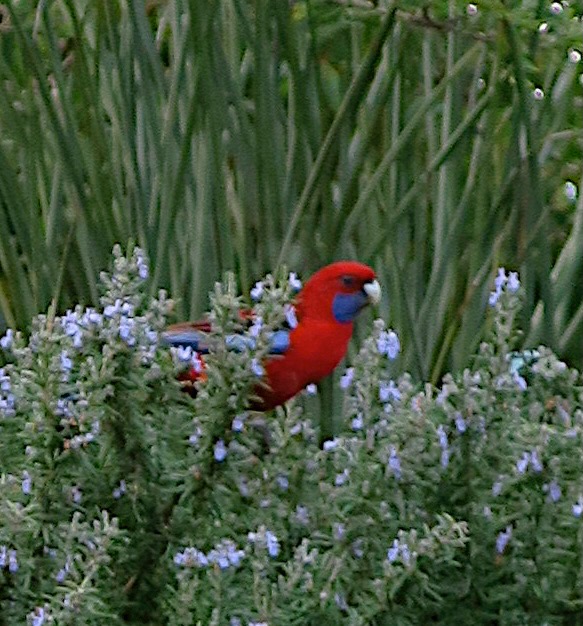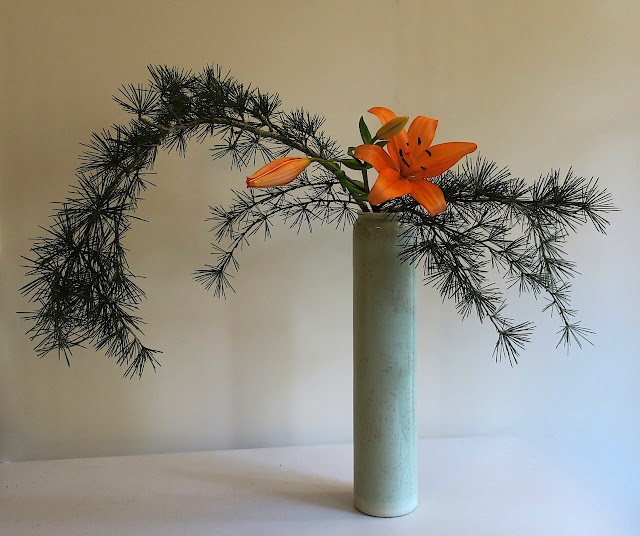Last week my Melbourne students' exercise was: "A free standing arrangement of bare branches; a two-step approach". This is one of the newer exercises introduced into the Sogetsu curriculum. The first step of the exercise is to make a freestanding structure with bare branches. This is a great opportunity for students to practise fixing techniques to firmly secure woody materials together. For lighter branches, wire may be used as long as it is very discreetly done and not eye- catching to the observer. Screws and dowels are helpful for heavier branches. Step two of the exercise is to position the structure in or around a vase to which fresh materials are added.
Aileen was unable to attend the class and sent these photos of her work done at home. This first photo shows step one completed.
In step two, Aileen added Plum blossom Prunus mume, in a grey cylindrical vase which is balanced among the lower branches.
Jacqueline made her structure with ornamental Manchurian Pear Pyrrus ussuriensis.
She then turned the structure upside-down in a tall 'spaghetti' jar, to which she added some Oriental lilies Lilium.
Eugenia used some unidentified branches with small red berries to make her structure.
She then placed the structure across a shallow white bowl and added a mass of Leptospermum flowers. The bowl was positioned off-centre on a bright red placemat.
My ikebana this week is a second example I made at our June workshop on the theme: One leaf and one flower. The leaf is a relatively small "Tree philodrendon" Thaumatophyllum bipinnatifidum, and the flower is a white Oriental lily. I have placed the leaf upside-down within the open mouth of the vessel as though it is emerging, to show the ribbing of the underside. The flower is positioned facing to the side so that it does not dominate the simple arrangement. This positioning also shows the back of the petals.
The vessel is by the Australian ceramicist Isabella Wang.
Greetings from Christopher
18th August 2024































